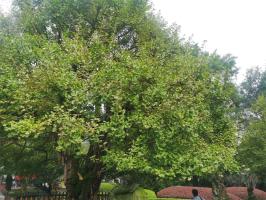Does Planting More Trees Reduce Carbon Emissions?
Climate change is one of the most pressing issues that we face today. The increase in greenhouse gases, particularly carbon dioxide, has resulted in global warming, rising sea levels, and other devastating impacts. In the fight against climate change, planting trees is often touted as a solution that can help reduce carbon emissions. But does planting more trees actually work?
The Science Behind Planting Trees
Trees absorb carbon dioxide from the atmosphere through a process known as photosynthesis. During this process, trees use light energy to convert carbon dioxide and water into glucose, a type of sugar that the tree uses for energy. This means that when we plant more trees, we are increasing the number of carbon-absorbing organisms on the planet.
Furthermore, trees also act as carbon sinks, which means they store carbon in their biomass, such as leaves, branches, and roots. This stored carbon would otherwise be emitted into the atmosphere as carbon dioxide. Thus, planting more trees can help to reduce the overall amount of carbon dioxide in the atmosphere.
The Effectiveness of Planting Trees
While trees do have the ability to absorb and store carbon, it is important to note that planting more trees alone will not solve our climate crisis. The impact of planting trees on reducing carbon emissions is dependent on several factors, such as the number of trees planted, the types of trees, and the location of planting.
Research has shown that tropical forests are particularly effective at absorbing carbon dioxide, as they have a high growth rate, large biomass, and are able to sequester carbon for many years. However, the effectiveness of planting trees in reducing carbon emissions in other regions can vary widely.
Furthermore, planting trees is only one part of the equation. In order to truly reduce carbon emissions and mitigate the impacts of climate change, we need to address the root causes of the problem, such as reducing our reliance on fossil fuels and transitioning to renewable energy sources.
The Importance of Proper Tree Planting
When it comes to planting trees, it’s not just about the number of trees planted, but also how they are planted. Proper tree planting techniques can help to ensure that trees thrive, absorb carbon, and provide other benefits such as clean air and water, habitat for wildlife, and soil erosion control.
Some things to consider when planting trees include choosing the right species for the location, ensuring adequate space and resources for the trees to grow, and properly maintaining the trees, such as pruning and watering as needed.
The Bottom Line
So, does planting more trees reduce carbon emissions? The answer is yes, but with some caveats. Planting trees can help to absorb and store carbon, but it is only one part of the solution to the climate crisis. Additionally, the effectiveness of planting trees in reducing carbon emissions is dependent on various factors, such as the number of trees planted and the location of planting. Nonetheless, planting trees is an important step in the fight against climate change, and proper tree planting techniques can help to maximize their impact.

 how many times do yo...
how many times do yo... how many planted tre...
how many planted tre... how many pine trees ...
how many pine trees ... how many pecan trees...
how many pecan trees... how many plants comp...
how many plants comp... how many plants can ...
how many plants can ... how many plants and ...
how many plants and ... how many pepper plan...
how many pepper plan...






























